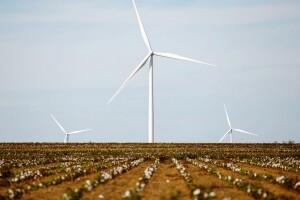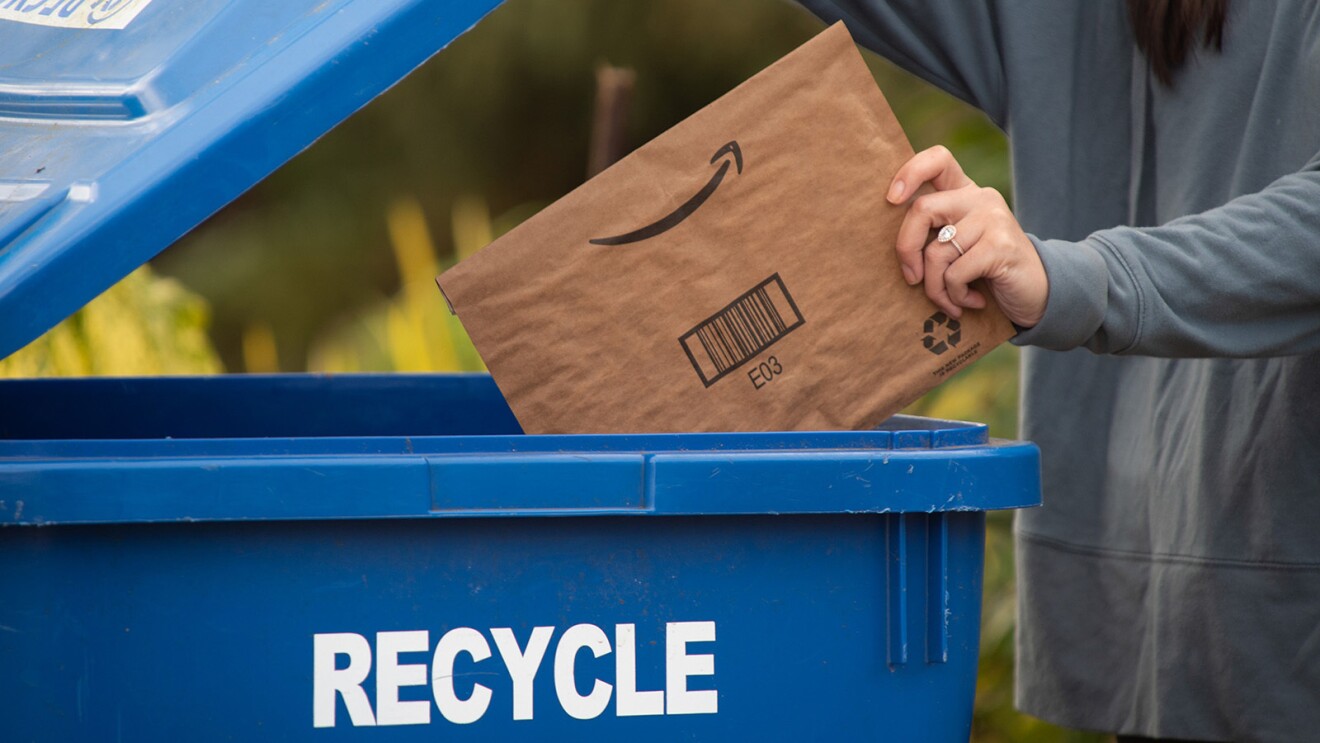Assembled in neat rows across a westward stretch of the Mojave Desert in Southern California, solar panels at the Baldy Mesa solar farm are turning ample sunlight into carbon-free energy and sending it into the grid.
As it does every day, the sun eventually stops shining, along with the power being produced. At this solar-plus-storage farm, that doesn’t mean the energy stops flowing. Beginning this May, a football field-sized battery energy storage system (BESS) next to the solar panels will send electricity gathered during the day back to the grid, ensuring carbon-free energy is available even at night.

Transitioning to solar and wind power is one of the fastest ways to help decarbonize electricity grids, but the amount of renewable energy available can vary when the sun isn’t shining. Pairing a solar project with a battery storage system can help solve for this by providing a steady supply of carbon-free energy for more hours of the day. At Baldy Mesa, a solar farm enabled by Amazon, and developed, owned, and operated by AES, machine learning (ML) models powered by Amazon Web Services (AWS) are helping predict when and how the project’s battery unit should charge and discharge energy back to the grid.
“AI is an important tool that’s already helping our society make the transition to carbon-free energy and address climate change at scale,” said Kara Hurst, Amazon’s vice president of Worldwide Sustainability. “Pairing solar projects enabled by Amazon with AI technologies powered by AWS helps to ensure the grid and the customers it serves receive a steady supply of carbon-free energy for more hours each day, while also helping Amazon make progress toward our commitment to be a more sustainable company.”
Amazon has enabled the development of 10 solar energy projects paired with battery energy storage systems to date–representing nearly 1.5 gigawatts (GW) of battery energy storage capacity. The projects include Baldy Mesa and Bellefield, the largest planned solar-plus-storage project in the US, in addition to Amazon’s first rooftop solar array combined with a battery storage unit, which was installed at Amazon’s San Bernadino Air Hub. All 10 projects are located across the southwestern U.S. in California and Arizona, and are helping power Amazon operations, including fulfilment centers, office buildings, and Amazon’s data centers by matching the electricity they use with renewable energy.
How AI is supporting battery energy storage

At Baldy Mesa, the use of AI to optimize the battery’s performance is an emerging trend by carbon-free energy owners and operators, who are increasingly turning to machine learning to strengthen carbon-free energy production and help stabilize the grid.
Digitalization and the cloud have enabled a surge of data, such as real-time weather data and historical grid data. For example, according to the International Energy Agency (IEA) the world’s fleet of wind turbines is estimated to produce more than 400 billion data points per year that AI and ML models can learn from to improve the operational efficiency of carbon-free energy projects.
At Baldy Mesa, software leveraging machine learning, which was built using AWS service Amazon SageMaker, is expected to analyze up to 33 billion data points each year, according to Fluence, the solutions provider. The software is designed to help to extract more value from Baldy Mesa’s battery unit by dynamically optimizing when to buy, store and sell energy based on grid conditions. The same ML solution deployed at a similar site in California was able to help anticipate last year’s state-wide heatwave and helped stabilize the grid by delivering stored solar energy when it was needed the most.

This AI innovation is becoming more important as climate change makes heat waves hotter and more frequent, stretching power grids to their limits. As the temperature goes up, homes and businesses often turn up their air units to stay cool, placing pressure on grid operators to meet high demand, and the heat simultaneously can lead to reduced output of traditional thermal power plants, risking outages. These extreme weather events have further signaled the need to accelerate the global clean energy transition.
“We take a great amount of pride in our long-standing partnership with Amazon, supporting the company’s path to match the electricity used by their data centers, fulfilment centers, and other operations, with 100% renewable energy sources by 2025. Projects like Baldy Mesa and Bellefield are around-the-clock operations, and battery energy storage units coupled with AI/ML-enabled trading is essential to ensure we optimize and enhance the deployment of renewable energy to meet their needs,” said Kleber Costa, Chief Commercial Officer at The AES Corporation.
Battery energy storage at Amazon’s Air Hub
An hour away from Baldy Mesa at Amazon’s San Bernardino Air Hub, the building’s 5.8-megawatt (MW) rooftop solar array is paired with a 2.5 MW battery energy storage unit. When the sun is shining, the solar panels power the Air Hub's operations. But when clouds roll in, or the sun sets, the site can seamlessly draw a portion of its power from batteries instead. This makes it possible for solar energy to be deployed in the middle of the night, providing Amazon’s Air Hub with a stable supply of carbon-free energy while also reducing reliance on the grid during periods of high demand.

Amazon teams are currently developing an AI model that will leverage ML capabilities, along with performance data from Amazon rooftop solar arrays to help the Air Hub and other Amazon buildings minimize energy usage.
The teams are first aggregating performance information from the solar panels on the Air Hub rooftop and other Amazon locations, then combining it with local weather and building data at a central location in AWS Data Lake, setting a foundation for advanced performance tracking and analysis. Once launched, the future AI model is expected to offer predictive insights on site performance and energy generation. This task is currently not possible for humans to perform, as it requires manual analysis and monitoring of each Amazon system and building.
“Battery storage projects enable increased use of renewable energy, helping ensure that the clean energy from solar and wind projects is available to the grid at all times,” said Kevin Hagen, the Clean Energy Buyers Association’s interim CEO. “Energy storage, smarter and more interactive load management tools, and AI are among the new technologies that hold significant potential in a lower-cost transition to carbon-free energy.”
Amazon is helping to democratize the use of AI across the energy sector

Amazon’s innovative work at San Bernardino and Baldy Mesa are one of many ways the company is leveraging AI to address some of the most pressing sustainability issues, and democratize our work across the wider energy sector with AWS customers and partners. With the increasing demand for carbon-free energy sources, AWS empowers companies to leverage AI to optimize their operations and drive innovation. For instance, Greenko, one of India's leading renewable energy companies, has digitally onboarded its entire fleet of wind turbines to AWS, enabling near-real-time monitoring and analytics using AI. Similarly, Engie's "Common Data Hub" built on AWS allows cities like Barcelona to reduce energy consumption by up to 15 percent through advanced data analysis and ML models.
By democratizing access to these cutting-edge technologies, AWS helps companies across the energy sector to drive innovation, optimize operations, and contribute to a more sustainable future.














